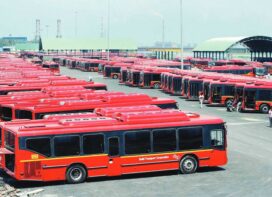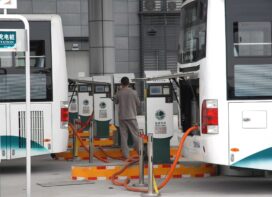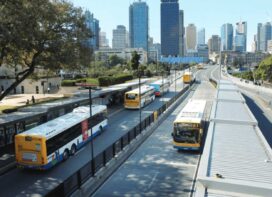 G. Janardan, IPS, ADGP, PTRI, Madhya Pradesh Police tells Trafficinfratech that ensuring timely repairs & upgrades of infrastructure is critical to prevent road accidents.
G. Janardan, IPS, ADGP, PTRI, Madhya Pradesh Police tells Trafficinfratech that ensuring timely repairs & upgrades of infrastructure is critical to prevent road accidents.
Bhopal is among the top 10 cities in India (sixth) in terms of reported accidents. However, the number of fatal accidents is lower as compared to other big cities. The reasons for the big number of reported accidents are driver negligence, poor road conditions, and limited infrastructure improvements. Also, there are fewer major thoroughfares, leading to increased traffic on smaller, less accommodating roads. Lack of sufficient road maintenance and safety upgrades also contributes to accident risks.

In terms of traffic violations, Bhopal experiences violations like over-speeding, red light jumping, improper lane changing etc. Due to the smaller population, local law enforcement has a better chance of spotting and addressing these violations, which could lead to better compliance among drivers. One issue faced by Bhopal is limited resources for traffic enforcement. The limited police forces struggle to patrol all areas regularly, leading to some violations going unnoticed or unpunished. Additionally, traffic cameras and advanced technology used in larger cities might not be as prevalent in small cities, impacting the ability to monitor and deter traffic violations effectively.
What is the organisational structure of your department that takes care of city road safety?
PTRI (Police Training and Research Institute) has been constituted at the state level through which guidelines related to road safety are issued to the districts from time to time. In the districts, the work related to road safety (like: – enforcement, traffic regulation, awareness etc.) of the cities is done by the Superintendent of Police, Station House Officers and Traffic Police of the Police Department. District road safety committees have been constituted in the districts under the chairmanship of the collector, nodal officers of the departments related to road safety have been incorporated in the said committee. The DRSC meetings are organized by the Collector twice in a month and the guidelines issued by the Lead agency/PTRI for road safety are reviewed, as well as the work of coordination with all the stakeholders is done.
Bhopal is one of the well-planned cities in India. What could be the challenges considering the size of the city and the vehicular traffic? What are the main impediments?
Infrastructure development and management are not up to the expectation. The existing infrastructure is being upgraded for a better traffic management. Ensuring timely repairs and upgrades become critical to prevent deterioration and avoid accidents caused by poor road conditions.
Bhopal often faces traffic congestion due to the high volume of vehicles on the roads. This congestion leads to increased travel times, driver fatigue and economic losses. Also, we are experiencing urban sprawl, where development expands outward without proper planning. This phenomenon can lead to longer commute times, increased dependency on personal vehicles, and challenges in providing efficient public services to dispersed areas.
The size of a city correlates with its environmental impact. Larger cities tend to produce more pollution and greenhouse gas emissions due to increased vehicular traffic and industrial activities. Implementing sustainable practices, promoting eco-friendly transportation options, and encouraging green urban planning are vital to mitigate these environmental challenges.
High vehicular traffic increases the likelihood of accidents and road-related injuries. It leads to a high demand for parking spaces as well. Some common impediments to improving traffic conditions include growing population & urbanization, inadequate infrastructure, lack of investment, car-centric culture, inefficient public transport, inadequate Traffic management, distracted driving and traffic violations, urban planning and zoning, and limited use of technology.

Use of technology in traffic management and enforcement system
Madhya Pradesh ranks first in India in feeding information about road accidents in iRAD portal. The work of smooth operation of traffic in the city and taking action against violators of traffic rules are done by the traffic police. The enforcement has been strengthened by the use of technology by the police department.
a) ITMS: – Traffic monitoring and issuance of challan against traffic violators are done through ITMS in seven cities with population of more than three lakh in Madhya Pradesh. The challans are sent directly to the address of the violator. We are going to introduce more traffic software analytics against traffic rule violators as per the recommendation of the Police Technology Mission.
b) IEMS: – In the rural districts of the state, monitoring of traffic through surveillance cameras installed by the Police Department and advance action is in progress. A framework for action against traffic violators is under preparation.
c) Interceptor Vehicles, Speed Radar Guns, Gantry-Based Cameras: – Action is being taken against those driving faster than the prescribed speed limit through interceptor vehicles, speed radar guns, gantry-based cameras etc.
d) Breath Analyser: – Action is being taken against those who resort to drunken driving.
e) Electronic Challan: – As per the guidelines of the Madhya Pradesh High Court, challans are being processed in all cities through electronic POS machines, as well as an online portal has been created for convenient payment of challans. Like UPI, Debit Card, Credit Card and Net Banking.
f) Body-Worn Cameras: – The recording of the behaviour of the violators during the field challan proceedings is being done through body-worn cameras.
g) VAHAN Portal: – All types of challan proceedings have been linked to the Vahan portal of the Government of India. Due to which the correct information of the vehicle is used.
What are the main focus areas for reducing accidents and also ensuring safe city mobility?
We strongly believe that to reduce accidents in the state and ensure safe city mobility, concerted efforts of all stakeholders are necessary. The infrastructure development of the state is good. At present, the main focus areas in the state to reduce accidents and ensure safe city mobility include creating awareness among people about traffic rules, driving safe vehicle, driving at a safe speed, maintaining safe distance between two vehicles, not driving on the wrong side, avoiding overloading, avoiding distracted driving etc.
Can you talk about the initiatives for awareness creation among road user and pedestrians?
Awareness campaigns are run by the police officers from time to time in schools, colleges, public places, weekly markets, public meetings in cities and village panchayats. The citizen awareness initiatives include Good Samaritan Scheme, Solatium Fund Scheme, talking about the need for the use of retro-reflective tape in vehicles, side effects of accidents and measures to save life after accident. Accident Prevention efforts and road safety guidelines issued by the Government of India/State are also included. The Police Department conducts public awareness campaigns for road users and pedestrians through Social Media, Banner/ Poster/ Pamphlets, Public announcements, Short videos, Gram-Panchayat, District/Village Safety Committee, NGOs, Schools/College programmes, radio, robotics etc.
 TrafficInfraTech Magazine Linking People Places & Progress
TrafficInfraTech Magazine Linking People Places & Progress


